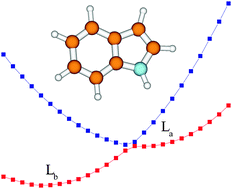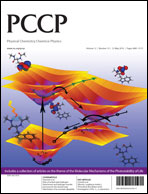The properties of the three lowest singlet electronic states (ground, 1Lb, and 1La states) of indole (C8H7N) have been calculated with second-order approximate coupled-cluster theory (CC2) within the resolution-of-the-identity approximation. Refined electronic energies at the CC2 optimized structures and transition dipole moments were calculated using a density functional theory multi-reference configuration-interaction (DFT/MRCI) approach. Structures, energies, and dipole moments are reported for all three states and compared to experimental values. From the optimized structures and calculated transition dipole moments, we predict that pure 1Lb bands will have positive signs for both the axis reorientation angle θT and the angle θ of the transition dipole moment with respect to the inertial a axis. For 1La bands the signs of both angles will be reversed. Vibronically coupled bands can exhibit opposite signs for θ and θT. The absorption and emission spectra of indole are calculated based on the Franck–Condon Herzberg–Teller approximation using numerical transition dipole moment derivatives at the DFT/MRCI level of theory. Implications for the experimentally observed vibronic spectra are discussed. Predictions are made for rotationally resolved spectra of various rovibronic bands. A conical intersection, connecting the 1Lb and 1La states, which can be accessed to varying extents via different Herzberg–Teller active modes is found approximately 2000 cm−1 above the 1Lb minimum.

You have access to this article
 Please wait while we load your content...
Something went wrong. Try again?
Please wait while we load your content...
Something went wrong. Try again?


 Please wait while we load your content...
Please wait while we load your content...